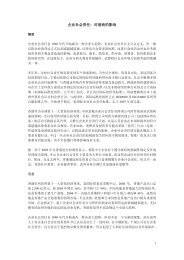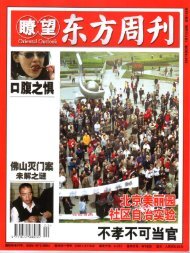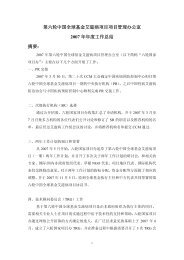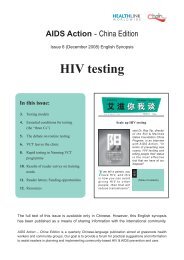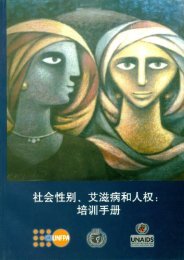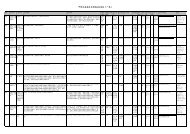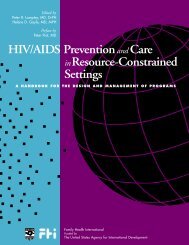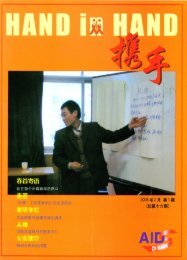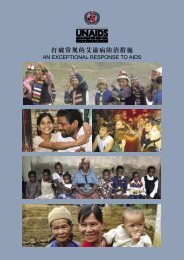The Training of Trainers Manual - UNFPA
The Training of Trainers Manual - UNFPA
The Training of Trainers Manual - UNFPA
Create successful ePaper yourself
Turn your PDF publications into a flip-book with our unique Google optimized e-Paper software.
Ensure that both columns include positive and negative words or phrases. Also,<br />
add biological characteristics (such as women have vaginas, men can grow beards,<br />
men have penises, women can breastfeed, men experience wet dreams, etc.) if<br />
none are suggested by the participants.<br />
Now reverse the headings <strong>of</strong> the first and third columns by writing ‘man’ above<br />
the first column and ‘woman’ above the third column. Working down the list,<br />
ask the participants whether men can exhibit the characteristics and behaviours<br />
attributed to women and vice versa. Place those attributes usually not considered<br />
interchangeable into the middle column, and label this column ‘sex’.<br />
To save time, it is not necessary to discuss each term separately. However, make<br />
sure that all the words in the ‘sex’ column are discussed.<br />
Expect participants to debate the meanings <strong>of</strong> some words – one <strong>of</strong> the goals<br />
<strong>of</strong> this exercise is to demonstrate that people assign different meanings to most<br />
characteristics that are gender-based.<br />
Be prepared to handle discussions about different types <strong>of</strong> sexuality. It can<br />
be useful to distinguish ‘sexual orientation’ or ‘sexual identity’ from gender. If<br />
necessary, provide simple definitions for ‘sexual orientation’ and ‘sexual identity’<br />
on a flip chart or an overhead transparency. Point out that no matter what<br />
individuals’ sexual orientation or identity is, everyone is influenced by social<br />
expectations regarding their behaviour and roles according to their biological sex.<br />
Explain that sex has to do with biological and genetic matters, whereas gender<br />
refers to socially constructed roles, responsibilities, and expectations <strong>of</strong> males<br />
and females in a given culture or society. <strong>The</strong>se roles, responsibilities, and<br />
expectations are learned from family, friends, communities, opinion leaders,<br />
religious institutions, schools, the workplace, advertising, and media. <strong>The</strong>y are also<br />
influenced by custom, law, class, ethnicity and individual or institutional bias. <strong>The</strong><br />
definitions <strong>of</strong> what it means to be female or male are learned, vary among cultures,<br />
and change over time.<br />
Point out that many people confuse sex with gender or vice versa. <strong>The</strong> word<br />
‘gender’ is also <strong>of</strong>ten used inappropriately instead <strong>of</strong> ‘sex’ (for example, when<br />
people are asked their gender instead <strong>of</strong> their sex on application forms).<br />
68 <strong>Training</strong> <strong>of</strong> <strong>Trainers</strong> <strong>Manual</strong>




